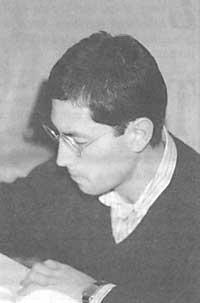Holograms of atoms
1989/02/01 Elhuyar Zientzia Iturria: Elhuyar aldizkaria
I
how have they worked? Take the surface of a metal. According to quantum mechanics, the electrons of this metal form a kind of cloud that extends beyond the surface.
If two metal surfaces are very close, the distance between them is a few angström and the potential difference between surfaces is applied, the electrons involved can pass from one to the other. This is called a transverse tunnel effect on the potential barrier, which is the barrier between the two surfaces.
The resulting current intensity depends on the number of electrons involved and, therefore, the distance between both surfaces. The base of the microscope is simple: in front of a surface a very thin metal end must be placed.
The distance between the end and the surface is adjusted to achieve the desired intensity tunnel effect. If the end moves over the surface, keeping the current constant, the end will approach or distance according to the exact topography of the surface.
The recording of these displacements generates a map of relief and through a graphical software a two-dimensional image of the surface studied is obtained. American researchers have not stayed there and have completed the surface hologram using holography techniques.
This technique, according to the developers, will provide the researcher with additional information on the topography of atoms.

Gai honi buruzko eduki gehiago
Elhuyarrek garatutako teknologia





